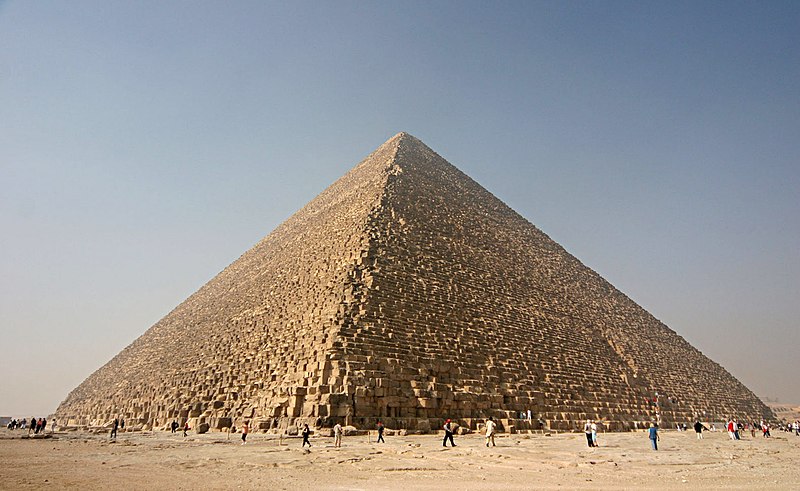Before taking this course, I thought math was only about patterns, ratios, and shapes. In contrast, I realized this week that there is actually a large amount of math involved in art, and that in fact the intricacies of art can be described using math. One of the commonly seen ancient creations, the pyramid, can be seen as strongly correlated to the special right triangle that corresponds to the golden ratio:
This ancient creation exhibits how mathematics produces art, and how mathematical tools have always been used to create art. As Professor Vesna mentioned in lecture, a lot of artists create their works based on mathematics, such as Leonardo Da Vinci. To me, especially after watching the Da Vinci Code, I really found his drawing of the Mona Lisa as an attempt to recreate the golden ratio quite intriguing:
Professor Vesna pointed out in lecture that math is critical in the study of art, and how if you want to draw irregular dimensions, then you will have to use math to calculate it. Leonardi Da Vinci studied perspective, and used it to a great extent in order to recreate the golden ratio. He was a great scientist and artist, as he successfully integrated art and math both as an artist and a mathematician. I believe that what made him stand out the most from the other artists is his ability to make art and math contribute to each other: His art pieces were influenced by his mathematical research, while his mathematical research was facilitated by his artistic expressions.
On another note, Linda Henderson's article The Fourth Dimension and Non-Euclidean Geometry in Modern Art: Conclusion referenced the two concepts of space beyond immediate perception that were central to the development of modern art. I found Tony Robbin's quote interesting, as he attempted to recreate his work integrating the idea of the fourth dimension. Here is his website: http://tonyrobbin.net/
I have learned that mathematics is critical to both science and art, because it acts as a critical barrier to connecting these two fields. Leonardo Da Vinci would never have been able to research the golden ratio if he hadn't been passionate about art, and vice versa. Mathematicians and artists are similar in the fact that they are both driven by the same passion to know how practical things work in the world. However, what they are different in is that while mathematicians are restricted by formulas and theoretical thinking, artists are free to explore their own ideas in abstract ways.
Citations
http://upload.wikimedia.org/wikipedia/commons/thumb/e/e3/Kheops-Pyramid.jpg/800px-Kheops-Pyramid.jpg
Vesna, Victoria. “Mathematics-pt1-ZeroPerspectiveGoldenMean.mov.” Cole UC online. Youtube, 9 April 2012. Web. 11 Oct. 2012. <http://www.youtube.com/watch?v=mMmq5B1LKDg&feature=player_embedded>
http://www.youtube.com/watch?v=JFTSAjZEqPw
Henderson, Linda Dalrymple. “The Fourth Dimension and Non-Euclidean Geometry in Modern Art: Conclusion.” Leonardo. 17.3 (1984): 205-210. Print.
http://tonyrobbin.net/

Winston I really liked the point that you made at the end of your post. I never really thought of it that way. Mathematicians are limited in many ways by their dependence on numbers and formulas whereas artists are more free to do what they want. Yet, at the same time artists are also limited. I don't know if you've seen the video "Don't Hug Me I'm Scared" but it pretty much sums up art, in my opinion. Here's a link if you want to watch it. http://www.youtube.com/watch?v=9C_HReR_McQ
ReplyDelete